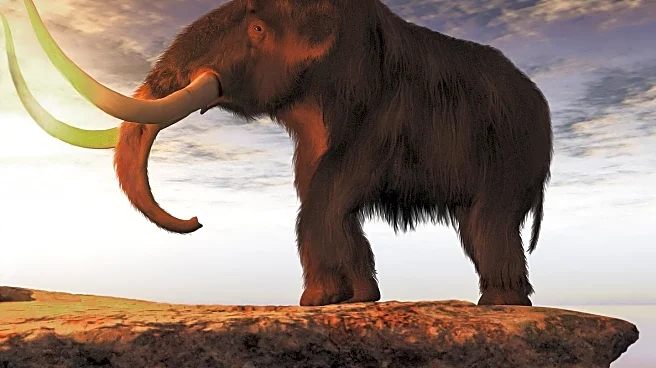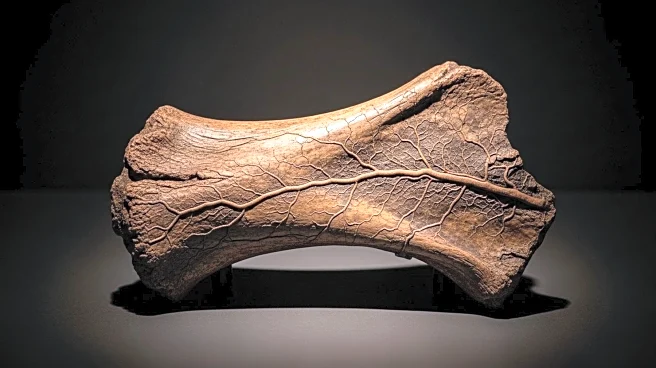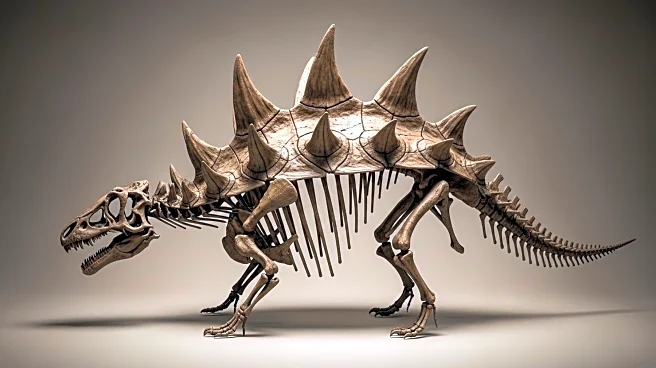What's Happening?
A team of paleontologists has discovered a nearly complete mammoth skeleton in Natural Trap Cave, located in the Bighorn Mountains of Wyoming. The cave, known for its rich Ice Age fossil deposits, revealed the mammoth's bones in their original life position, indicating excellent preservation. Julie Meachen, a mammalian biologist from Des Moines University, led the excavation team, which has been exploring the cave for over a decade. The discovery adds to the site's reputation as a significant source of Ice Age fossils, including remains of various prehistoric animals.
Why It's Important?
The discovery of the mammoth skeleton is crucial for understanding the biodiversity and ecological dynamics of the Late Pleistocene era. Natural Trap Cave serves as a unique repository of Ice Age fossils, offering insights into species that roamed North America during this period. The preservation of collagen in the mammoth's bones suggests minimal permineralization, providing valuable material for genetic and evolutionary studies. This find could enhance scientific knowledge of mammoth biology and contribute to broader research on climate change and species adaptation.
What's Next?
Further excavation and analysis of the mammoth skeleton are expected, potentially uncovering more details about its life and environment. Researchers may continue to explore Natural Trap Cave for additional fossils, aiming to reconstruct the ecological history of the region. The findings could lead to new publications and collaborations among paleontologists, enhancing the scientific community's understanding of Ice Age ecosystems.
Beyond the Headlines
Natural Trap Cave's location in a 'hybridization zone' during the Late Pleistocene suggests it was a meeting point for North American and Eurasian species. This unique aspect may lead to discoveries of hybrid species, offering insights into evolutionary processes and genetic diversity. The cave's conditions, preserving mitochondrial DNA, could facilitate studies on extinct species' genomes, contributing to advancements in genetic research.












